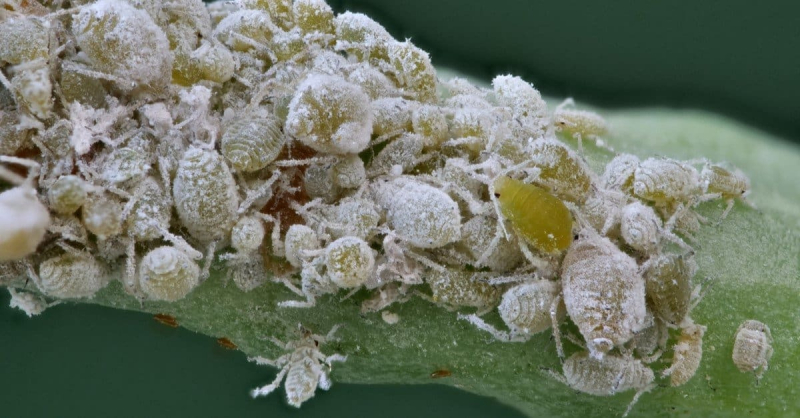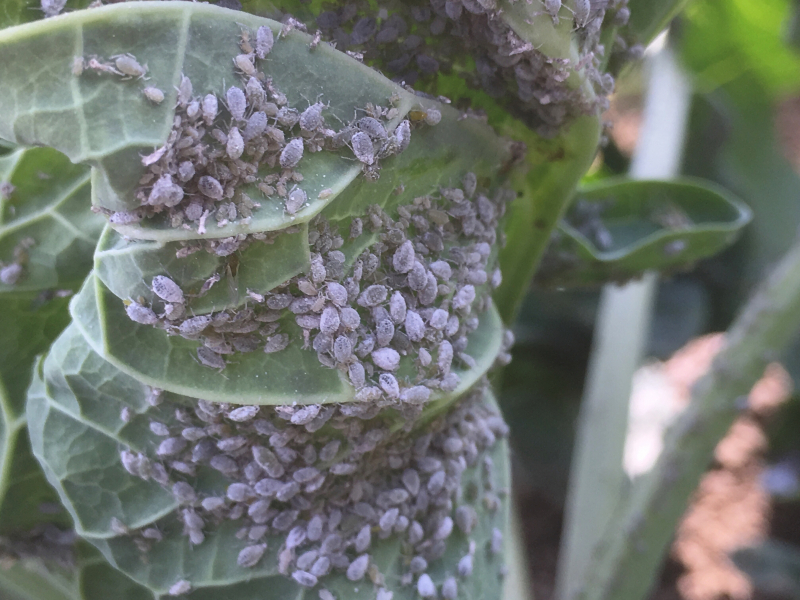Cabbage Aphids
The cabbage aphid is a member of the Brevicoryne genus. The name, which roughly translates to "little pipes," comes from the Latin words brevi and coryne. There are two tiny pipes in aphids known as cornicles or siphunculi. Cabbage Aphid is one of the most interesting animals laying eggs because the female can produce genetic copies of itself, up to 10 offspring per day. With the help of a microscope, the first embryo of the next generation can be observed within newly hatched females. The eggs hatch inside the mother's body, just as the reptiles. Males are likewise born late in the season, as mating provides for genetic diversity. After that, the female deposits eggs, which will overwinter and hatch the following spring.
Cabbage Aphids have two ways of reproducing. Females give birth to female nymphs without mating in warm climates (e.g., Florida and Hawaii). In this scenario, an aphid colony is entirely made up of females. This also happens in temperate climates during warmer seasons. In temperate areas, however, the mechanism of reproduction shifts as the temperature drops in the autumn. Males are also produced in response to cold temperatures or a change in photoperiod.












